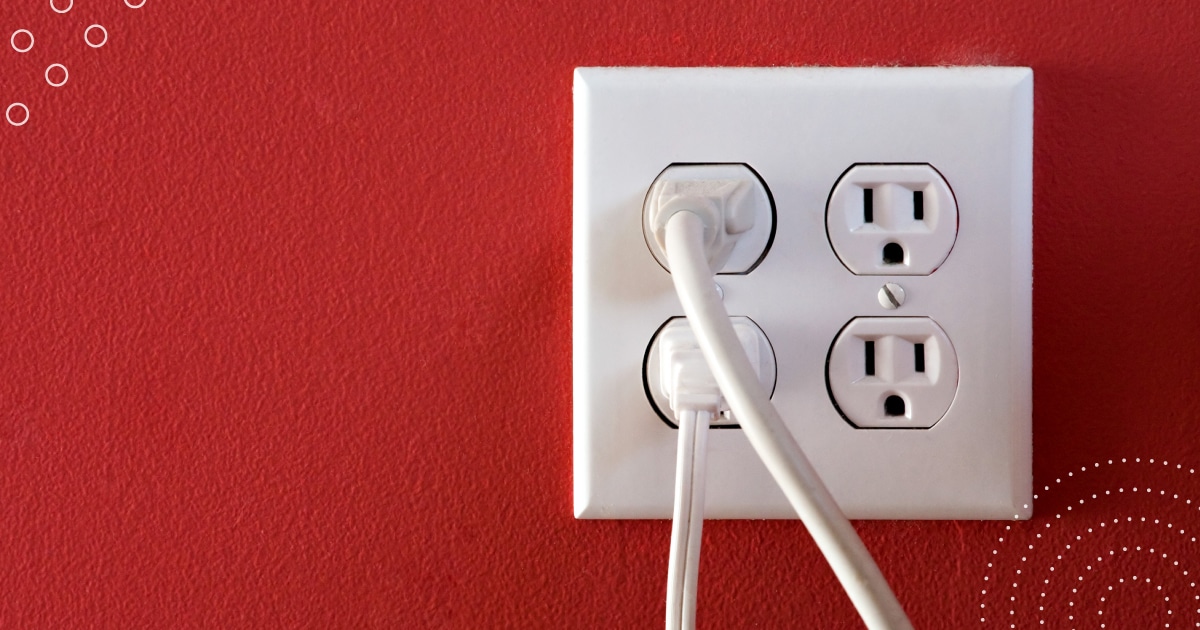Electrical Outlets: The Power Behind Your Wall - NEC Coop
Jan 28, 2024 — Resources

Imagine a world where the simple act of plugging in a device transforms our homes into hubs of convenience and comfort. That’s the hidden power of electrical outlets – the unsung heroes in our walls. Let’s go over some key information on their usage, types, and safety measures.
The Mechanics of Home Electrical Outlets
Electricity is an invisible force that powers our homes, and it all flows through electrical outlets. But how do these outlets work? Essentially, they are access points to the home’s electrical system, allowing electricity to flow into our devices when they’re plugged in. Understanding their operation is key to using them effectively and safely.
Different Types of Electrical Outlets
Outlets are not all created equal. There are at least four main types you’ll find in homes:
- Standard Outlets – The common two- or three-pronged outlets.
- Ground Fault Circuit Interrupter (GFCI) – These have a built-in breaker and are often found in bathrooms and kitchens.
- Arc Fault Circuit Interrupter (AFCI) – Designed to prevent electrical fires, these are becoming more common in modern homes.
- Tamper-Resistant Receptacles (TRR) – These have a built-in shutter mechanism, making them child-safe.
Safety First: Tips for Safe Outlet Use
Staying safe around electrical outlets is important, especially in homes with children. Here are some tips:
- Regularly check outlets for signs of damage or wear.
- Never overload an outlet with too many devices.
- Keep liquids away from outlets.
- Use safety covers on unused outlets if you have young children.
Understanding Electrical Risks
Electricity, while useful, poses significant risks like shocks, burns, and even fatalities. With thousands of electrical injuries occurring annually in the United States, awareness and prevention are key. It’s important to teach children and teenagers about electrical safety, as they are more likely to be at risk.
Spotting Dangerous Outlets
Stay alert for warning signs of dangerous outlets, such as:
- Unusual buzzing or humming sounds.
- Sparks when plugging or unplugging devices.
- Signs of burning or scorch marks.
- Loose or non-functional outlets.
Dealing with Sparking Outlets
If an outlet sparks, it’s usually a sign of a potentially serious issue. Here’s what to do:
- Unplug any connected devices immediately.
- Avoid using the outlet until it’s been checked by a professional.
- Consider having older wiring and outlets inspected and replaced.
Recessed and Floating Outlets
Apart from standard outlets, there are specialized types like recessed and floating outlets. Recessed outlets sit deeper in the wall, allowing furniture to be flush against it. Floating outlets, on the other hand, are mounted on surfaces like countertops or floors for easy access.
Reducing Electrical Risks at Home
To minimize electrical hazards:
- Regularly inspect and maintain your electrical outlets and wiring.
- Consider installing GFCIs and AFCIs in high-risk areas.
- Educate your family about electrical safety.
- Use professional services for any electrical repairs or installations.
Maintaining Healthy Electrical Outlets
Proper maintenance of electrical outlets is essential for safety and energy efficiency. It’s important to remember that they are not just for convenience, but are connections to a significant energy source that requires careful handling. By following these guidelines, families can ensure a safer and more efficient use of electricity at home.
By educating families about the types, uses, and safety measures of electrical outlets, NEC Co-op Energy aims not just to empower users but also to protect them against the risks associated with electricity. Knowledge is power, and in this case, it’s the key to safe and smart energy use.
Sources:
“Different Types of Electrical Outlets Homeowners Should Know,” HomeServe, https://www.homeserve.com/en-us/blog/buying-guide/electrical-outlet-types/
“12 Electrical Safety Tips You Should Know,” Smith & Keene, https://smithandkeene.com/12-electrical-safety-tips-you-should-know/
“Warning Signs For Your Electrical System,” Hiller, https://happyhiller.com/blog/warning-signs-for-your-electrical-system/
“Sparking Outlets: What You Need to Know to Stay Safe,” My Electric Works, https://www.myelectricworks.com/blog/2021/december/sparking-outlets-what-you-need-to-know-to-stay-s/
“8 Electrical Hazards at Home You Didn’t Know You Had,” Sun Electrical Ltd., https://www.sunsolarelectrical.ca/blog/electrical-hazards-home-you-didnt-know/
Voted #1 Electric Provider
We were recently voted the #1 Electricity Provider by the Corpus Christi Caller-Times’ Best of the Best Awards for the 7th year running!
Benefits of Membership
As a member of our co-op, you’ll enjoy the following benefits:
- You’ll get a share of our profits.
- You won’t be locked into a long-term contract.
- You’ll get a simple, competitive rate with no surprise fees or markups.
- You can get a $50 bill credit for every new member you refer.

